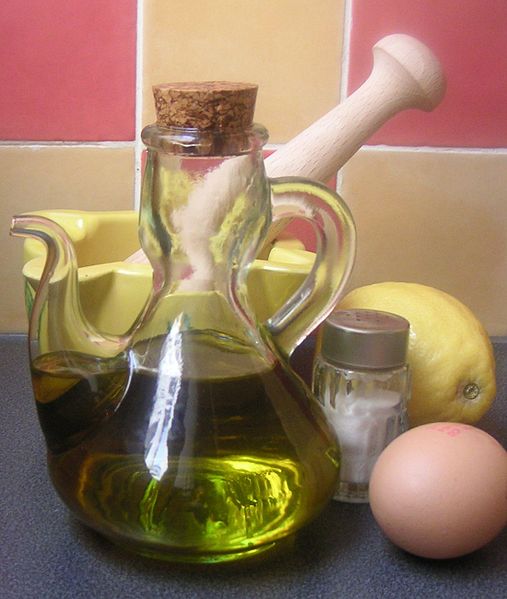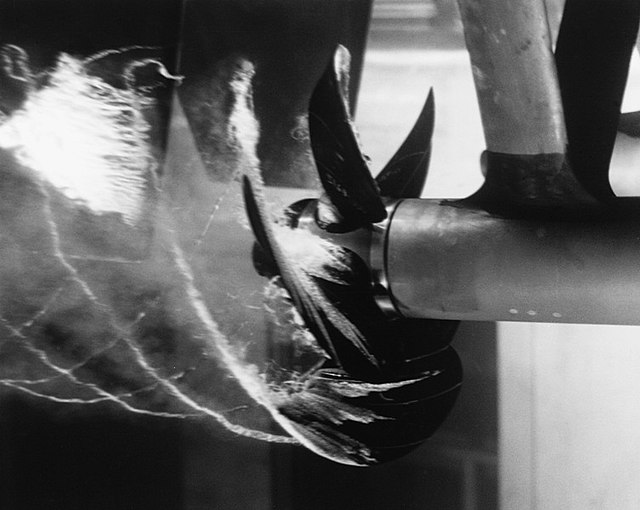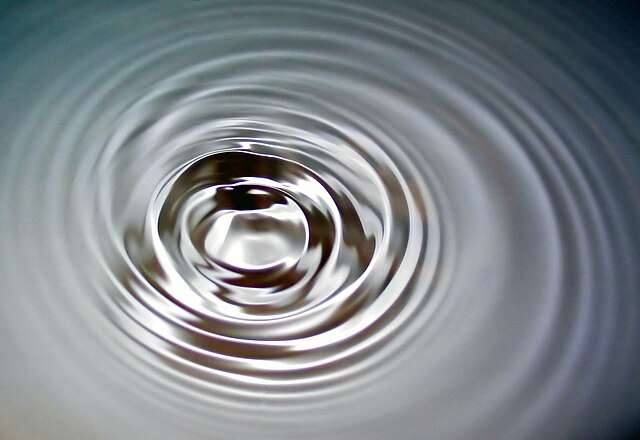An emulsion is a mixture of two or more liquids that are normally immiscible owing to liquid-liquid phase separation. Emulsions are part of a more general class of two-phase systems of matter called colloids. Although the terms colloid and emulsion are sometimes used interchangeably, emulsion should be used when both phases, dispersed and continuous, are liquids. In an emulsion, one liquid is dispersed in the other. Examples of emulsions include vinaigrettes, homogenized milk, liquid biomolecular condensates, and some cutting fluids for metal working.
An example of the ingredients used to make mayonnaise; olive oil, table salt, an egg (for yolk) and a lemon (for lemon juice). The oil and water in the egg yolk do not mix, while the lecithin in the yolk serves as an emulsifier, allowing the two to be blended together.
A liquid is a nearly incompressible fluid that conforms to the shape of its container but retains a nearly constant volume independent of pressure. It is one of the four fundamental states of matter, and is the only state with a definite volume but no fixed shape.
The formation of a spherical droplet of liquid water minimizes the surface area, which is the natural result of surface tension in liquids.
A lava lamp contains two immiscible liquids (a molten wax and a watery solution) which add movement due to convection. In addition to the top surface, surfaces also form between the liquids, requiring a tension breaker to recombine the wax droplets at the bottom.
Cavitation in water from a boat propeller
Surface waves in water





